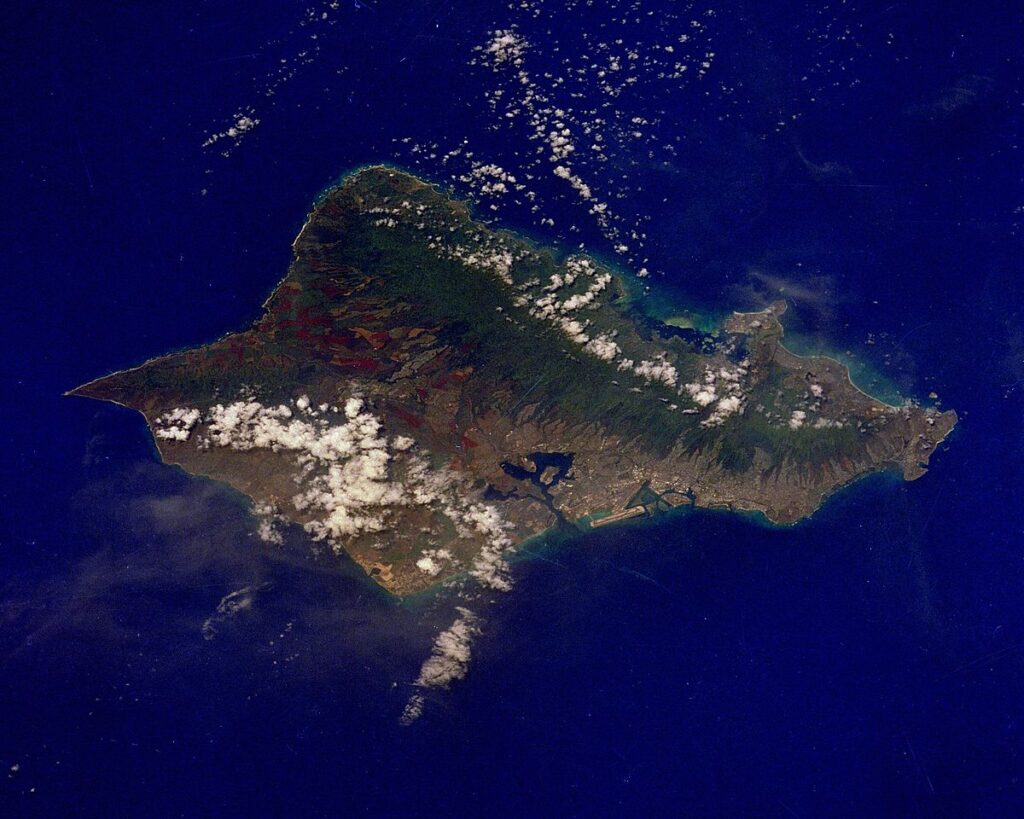
Moving to Oahu, Hawaii: A Comprehensive Relocation Guide
Considering moving to Oahu, Hawaii? This Gathering Place offers urban energy, diverse beaches, and island lifestyle. With approximately 1 million residents in 2025, Oahu combines Honolulu’s city sophistication with North Shore surf culture and Hawaii’s most populated and diverse island.
Demographic Profile to Consider If Moving to Oahu:
Oahu’s 2025 population is approximately 1 million residents (nearly 70% of Hawaii’s total population) across the City and County of Honolulu. The median age is around 39 years, with incredibly diverse residents including Native Hawaiians, Asian Americans (largest group), military families, professionals, students, and transplants from across the globe. The population is approximately 43% Asian, 20% White, 18% Two or More Races, 9% Native Hawaiian and Pacific Islander, 8% Hispanic. Oahu features dramatic regional variety: urban Honolulu and Waikiki, suburban communities (Pearl City, Mililani, Kapolei), military areas (Pearl Harbor, Schofield Barracks), windward residential (Kailua, Kaneohe), and legendary North Shore surf towns (Haleiwa, Sunset Beach). The island balances tourism economy with military presence, urban development, and residential diversity. Oahu attracts those seeking career opportunities, military families, diverse culture, and island living with city amenities. The community values diversity, aloha spirit, and urban-island balance. Find trusted local services for moving, living, and working in Oahu.Oahu Relocation Directory
Cost of Living to Consider If Moving to Oahu:
Oahu represents extreme costs ranking among America’s most expensive metros. Median home values range from $750,000 to $1.5 million+ in 2025, varying dramatically by region from central Oahu to luxury beachfront. The median household income is approximately $88,000. Rental properties average $2,400 to $4,500+ monthly depending on location. Hawaii has high excise tax (4.5%). Overall cost of living is extremely high—groceries cost 50-80% above mainland, gas is expensive, utilities costly, and housing astronomical. Oahu attracts military families (BAH essential), high-earning professionals, government employees with COLA, and those willing to sacrifice financially for island paradise with career opportunities. Housing costs create severe challenges with 30%+ of income to housing common. The diversity of regions creates varied price points from affordable (relatively) Waipahu to ultra-luxury Kahala.
Economy and Job Market:
Oahu’s economy centers on military, tourism, government, healthcare, and professional services. Major employers include U.S. military installations (Pearl Harbor, Schofield Barracks, Joint Base Pearl Harbor-Hickam employing tens of thousands), State of Hawaii government, City and County of Honolulu, tourism throughout Waikiki and island, healthcare systems (Queens, Kaiser, Tripler Army Medical Center), and University of Hawaii. The military presence provides massive economic impact. Tourism drives hospitality employment. Professional services concentrate in downtown Honolulu. The Port of Honolulu handles cargo. Typical industries include military, tourism, government, healthcare, education, and professional services. The economy provides Hawaii’s most diverse employment opportunities though costs require high income. Many residents work multiple jobs despite professional employment.
Education:
Hawaii Department of Education operates Oahu public schools with dramatic quality variation from excellent schools in affluent areas to struggling facilities requiring extensive family research. Private schools including Punahou, Iolani, Mid-Pacific Institute serve families able to afford tuition. The University of Hawaii at Manoa is the state flagship offering comprehensive programs. Hawaii Pacific University, Chaminade University, and community colleges serve students. The educational infrastructure reflects urban scale with choices requiring research and often tuition payments for quality.
Recreation and Lifestyle:
Oahu offers world-class attractions including Waikiki Beach, Diamond Head hike, North Shore legendary surf breaks (Pipeline, Sunset, Waimea Bay), Pearl Harbor historic sites, pristine beaches from Lanikai to Waimanalo to Sandy Beach, Hanauma Bay snorkeling, hiking trails throughout (Koko Head, Makapuu, Manoa Falls), and year-round ocean activities. Residents enjoy surfing, diving, fishing, paddling, and beach life daily. The island’s compact size (44 miles long) enables exploring varied regions easily. Honolulu provides urban amenities—restaurants, nightlife, shopping, cultural venues. The North Shore offers rural surf culture contrast. The lifestyle combines urban convenience with beach access, diverse dining, multicultural influences, and aloha spirit despite urban density. The tropical climate enables year-round outdoor living. The community values diversity, military service, respect for ocean and Hawaiian culture, and balancing tourism with residential quality of life. Living on Oahu means accepting extreme costs, significant traffic (H-1 freeway notorious), urban density contrasting island image, tourist crowds, and committing to island life’s trade-offs. The island offers Hawaii’s most career opportunities, diverse culture, and urban amenities while maintaining beaches and natural beauty. Military presence creates transient nature but also welcoming atmosphere and economic stability.
Healthcare and Services:
Oahu residents access world-class healthcare through Queens Medical Center, Kaiser Permanente hospitals, Straub Medical Center, Tripler Army Medical Center (military), and extensive medical infrastructure. The healthcare system serves as Hawaii’s medical hub with comprehensive specialized care.
Transportation:
Daniel K. Inouye International Airport (HNL) provides extensive flights. TheBus operates comprehensive routes with excellent coverage. The Skyline rail system began operations with ongoing expansion. Most residents use personal vehicles. Traffic is significant—H-1 freeway and other routes congest during rush hours. Gas is very expensive. Typical commute times range 30-70 minutes. Some urban neighborhoods offer walkability. The island’s compact size makes all areas accessible though traffic creates time challenges.
Conclusion:
Moving to Oahu in 2025 offers Gathering Place living with urban energy, diverse beaches, and career opportunities. The island’s combination of Honolulu sophistication, North Shore surf culture, and military community makes it ideal for military families, career professionals, and those seeking Hawaii’s most diverse island where city meets country and extreme costs buy life in America’s Pacific crossroads offering Hawaii’s ultimate urban-island balance.

